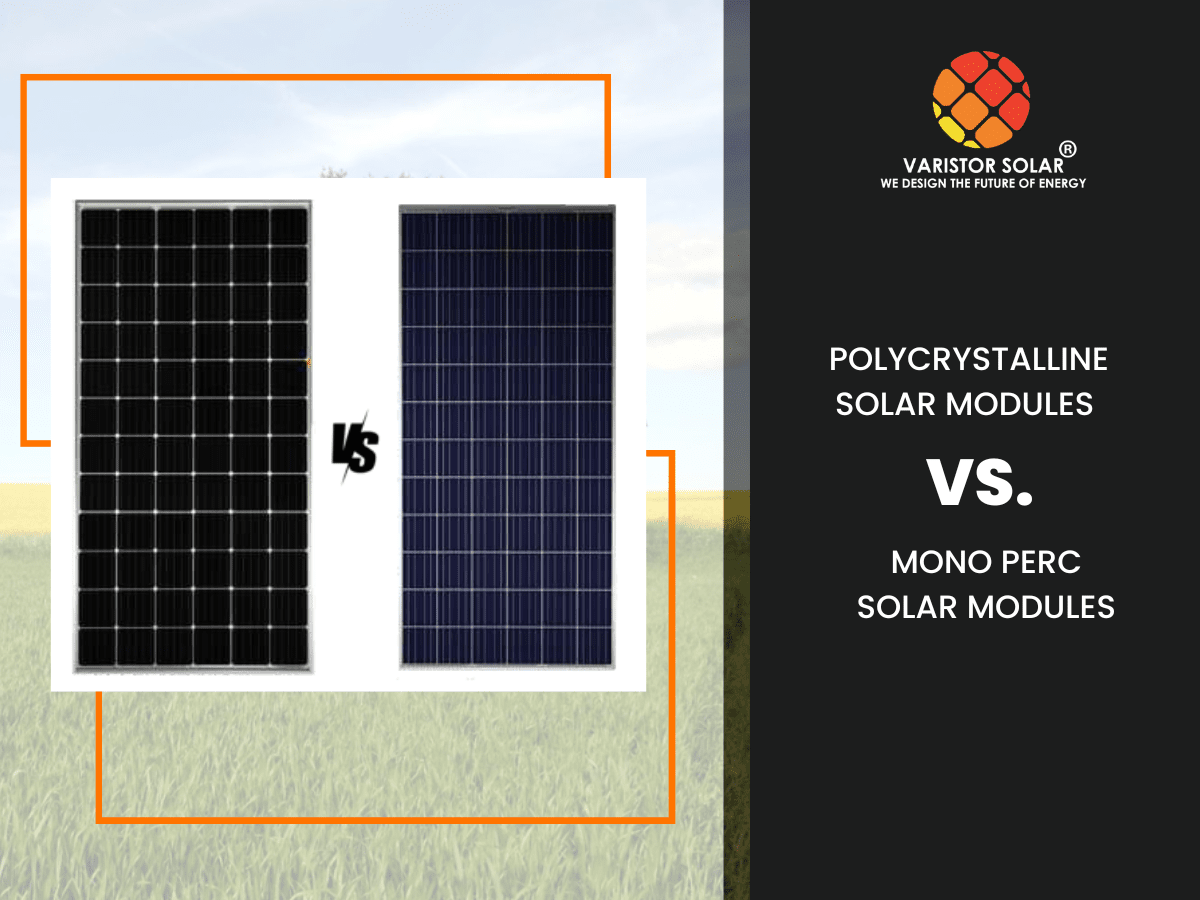Awareness in the solar energy field has been paving the way to magnificent innovations and flourishing opportunities for the last four to five years. That leads to improve the efficiency and reliability of solar panels. In general, we have two options easily available – Polycrystalline and PERC solar panels. Polycrystalline solar panels are conventional panels that have been in use for decades. PERC solar panels came up with new technology.
Passivated Emitter and Rear Contact Cell or PERC technology is one of the innovative practices with the architecture of the monocrystalline solar cell. Both have the same purpose – capturing the light and convert it into DC electricity.
PERC technology or architecture brings some promising results before us. There are more interesting points to know about this commendable technology on this page.
1. Polycrystalline Solar Panels:-
In this type of solar module, the fragments of silicon melted together to form wafers connecting in series. These square wafers are framed in a rectangle shape frame and covered with some sheets of different material on both surfaces. They appear dark blue.
2. Mono PERC Solar Panels:-
PERC stands for Passivated Emitter and Rear Contact cell. In this type of solar module, the cells look square with cutting edges or octagonal.
PERC technology or PERC architecture resolves some very important drawbacks that polycrystalline panels have. Those drawbacks are efficiency, shadow thread, low-light performance, and internal reflectivity. They look dark black.
- Main Objective:-
PERC architecture is to get more and more electrons through the solar cells.
PERC technology optimizes the ability of light capturing of the panel from the rear and passivated coatings.
3. What is New in PERC Panels?
The manufacturing of PERC panels is not very different from conventional solar panels. What is new is its architecture. Under this innovative idea, there are two new changes are taken into use – The Passivation layer and the Rear contact layer.
The passivation layer is the coating layer of Metal Oxide. The rear contact layer is a coating layer of Silicon Nitrate (SiNx), this is also known as the Capping layer.
The organization of these antireflective layers boosts the efficiency of conventional solar cells.
- Organization of Layers:-
These layers are made up of antireflective materials having efficient optical properties. The passivation layer is just the back of the monocrystalline solar cells. After that, the rear contact layer comes, as its name suggests that it is at the rear position and in contact with backseat or aluminum metal sheet.
4. Role of PERC Cells over Polycrystalline Cells:-
PERC architecture creates a different image from conventional solar cell technology by giving notable results. The main idea behind developing such architecture is not to let the energy pass through the backside of the panel. So PERC panels not only trap more and more energy or light but also produce the
most out of it. They also work well even in the diffuse radiation of sunlight in the environment.
- Reflection of Unobserved Light to the Cells:-
In conventional panels, the sunlight which is not absorbed by solar cells is absorbed by aluminum metallization or back sheet. So by using the passivation layer and rear contact that unabsorbed light is reflected back to solar cells.
That simply means this increases the light absorption and it leads to more and more electrons flow through solar cells. That makes PERC architecture better efficient and reliable.
- Reduction of Electrons Recombination:-
PERC architecture increases the movement of free electrons through the solar cells in the panel. That leads to an increase in the efficiency of the overall module.
5. Some Technical and Financial Advantages:-
- Space Requirement:-
The efficiency of Mono PERC panels is much better than polycrystalline panels. That means, for the same land area or rooftop area, PERC panels give higher plant capacity.
So it is suggested that when you find a problem with the area, then the PERC module can be the best choice.
- Performance in Dim Light:-
The performance of polycrystalline panels in cloudy days or low light is very poor. On the other hand, Mono PERC panels show excellent performance in low light or cloudy weather.
PERC modules work efficiently even in 200 to 300 w/m2 solar irradiance. So there is nothing to worry about even in the rainy season if you have got the solar plant of PERC panels.
- Less Installation Cost:-
Yes, even the cost of mono PERC panels is higher than polycrystalline panels, but you do not have to pay the high cost for installation.
One question might have bubbled up inside your mind that why installation cost is less in the case of mono PERC modules. Let us understand it with the help of an example. You want to get installed a 10kW capacity of the solar plant.
The dimension of 320W of the polycrystalline module is almost the same as 370W of the PERC module. You then need approximately 32 polycrystalline modules. On the other hand, you need 27 PERC modules for your plant. For the less number of modules, you need to pay less amount of installation cost.
And, the requirement of the installation kit for mounting structure will also be less. So mono PERC reduces installation cost.
6. Final Words:-
Polycrystalline and mono PERC modules function in the same way – they convert sunlight into DC electricity.
But PERC architecture comes over the drawbacks that polycrystalline panels
have. These drawbacks are poor performance in low light, low efficiency, and requirement of the area.
If you walk through this article you will then get to know why mono perc panels can be the best choice over polycrystalline for the plant that you are going to get installed in the future.

